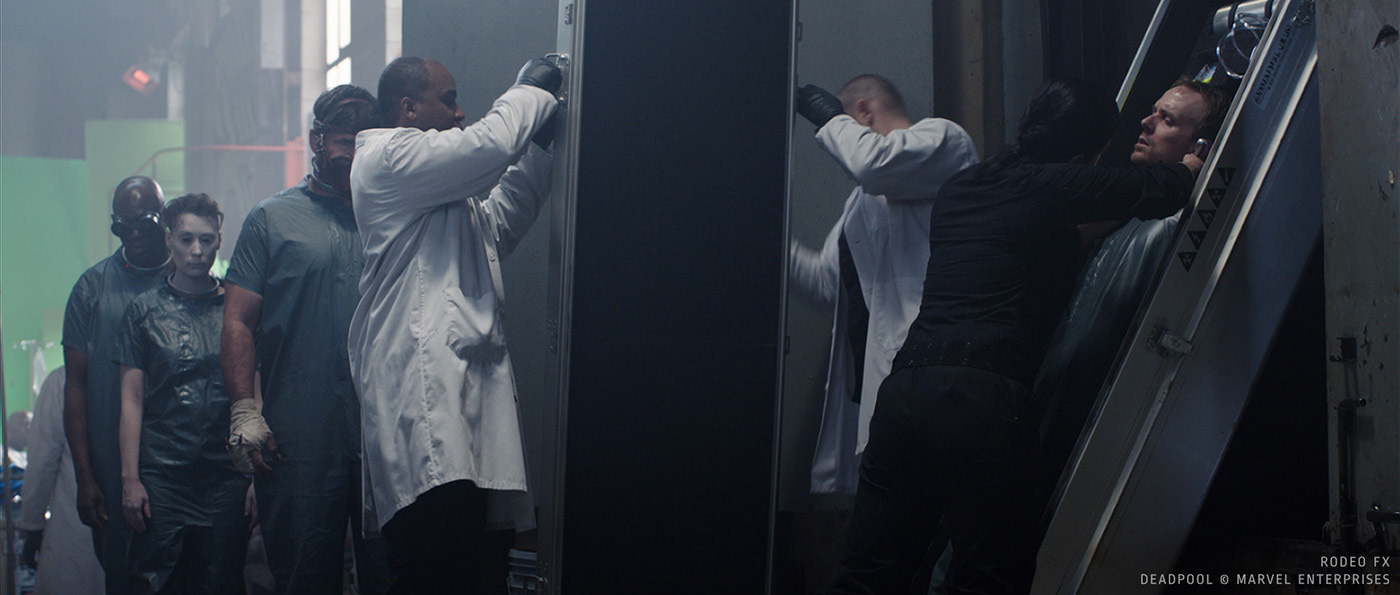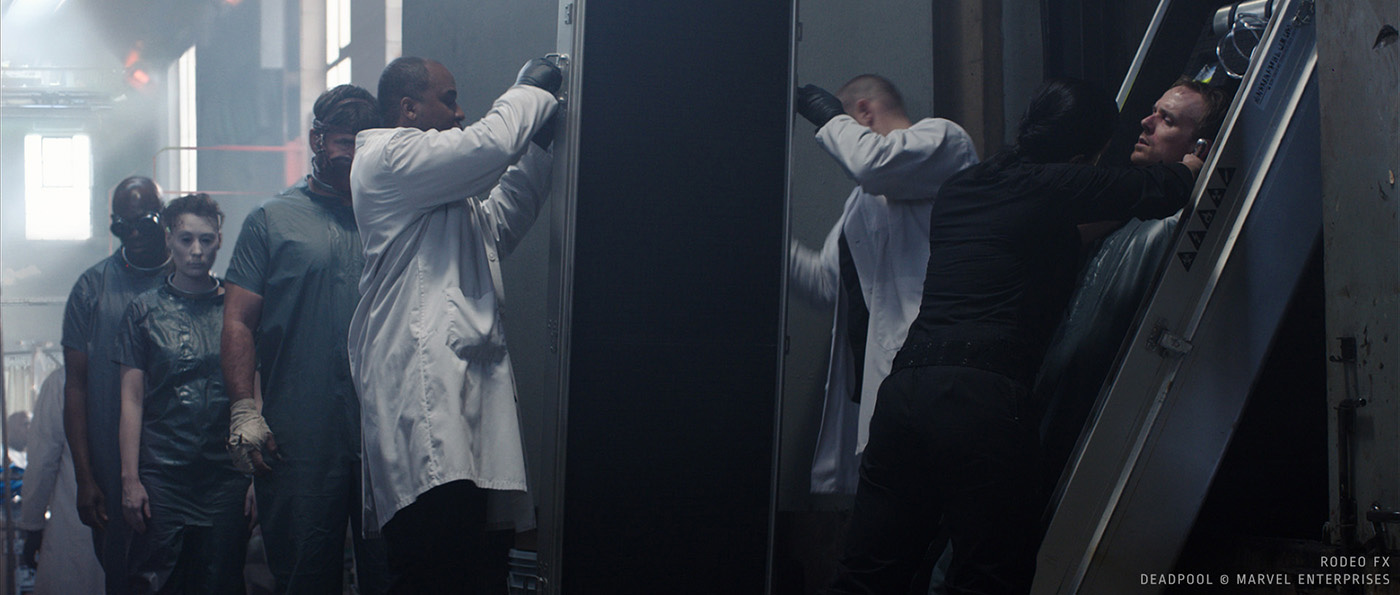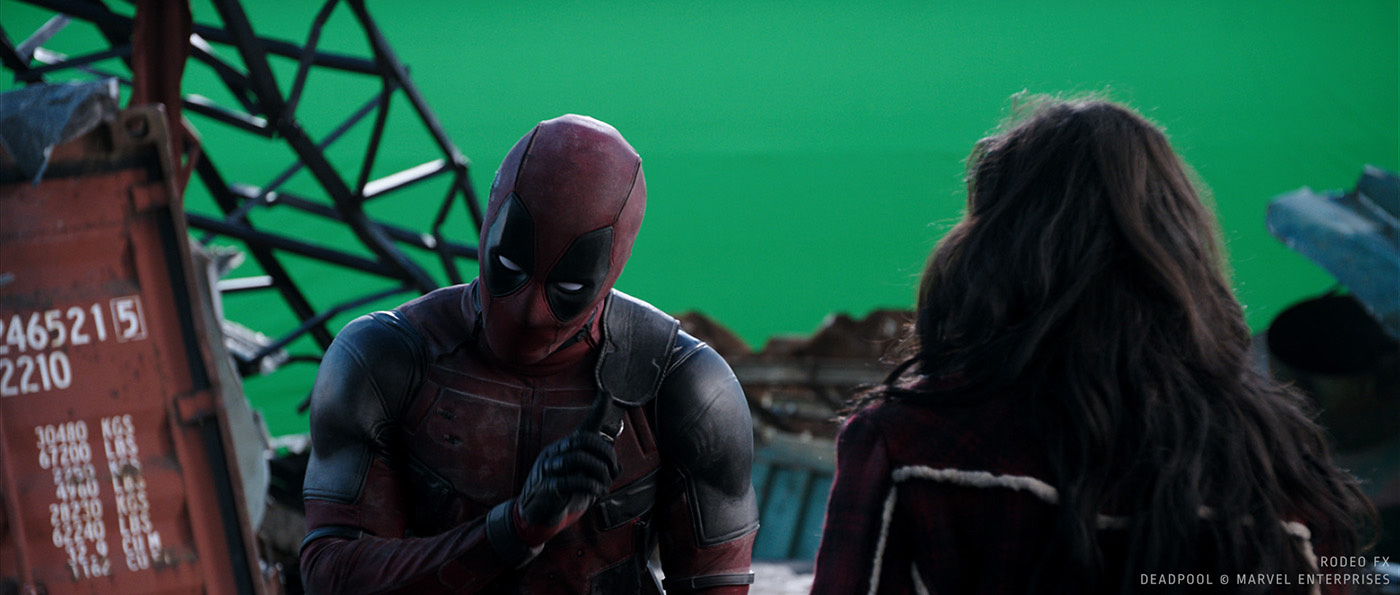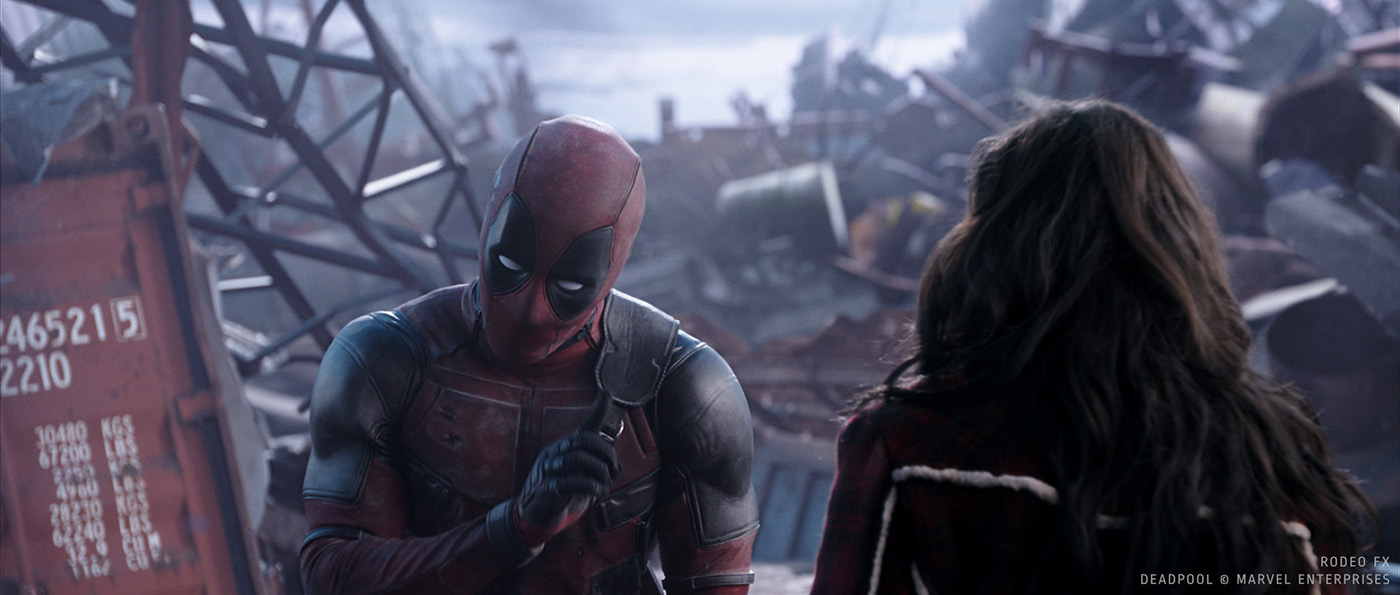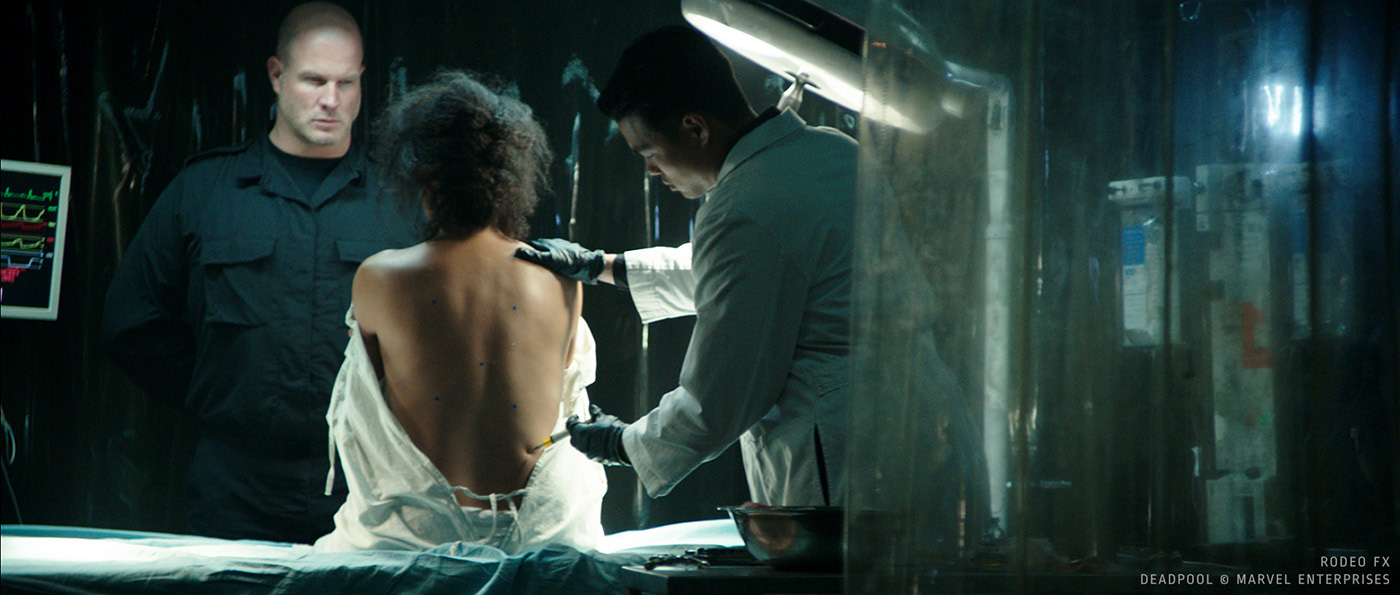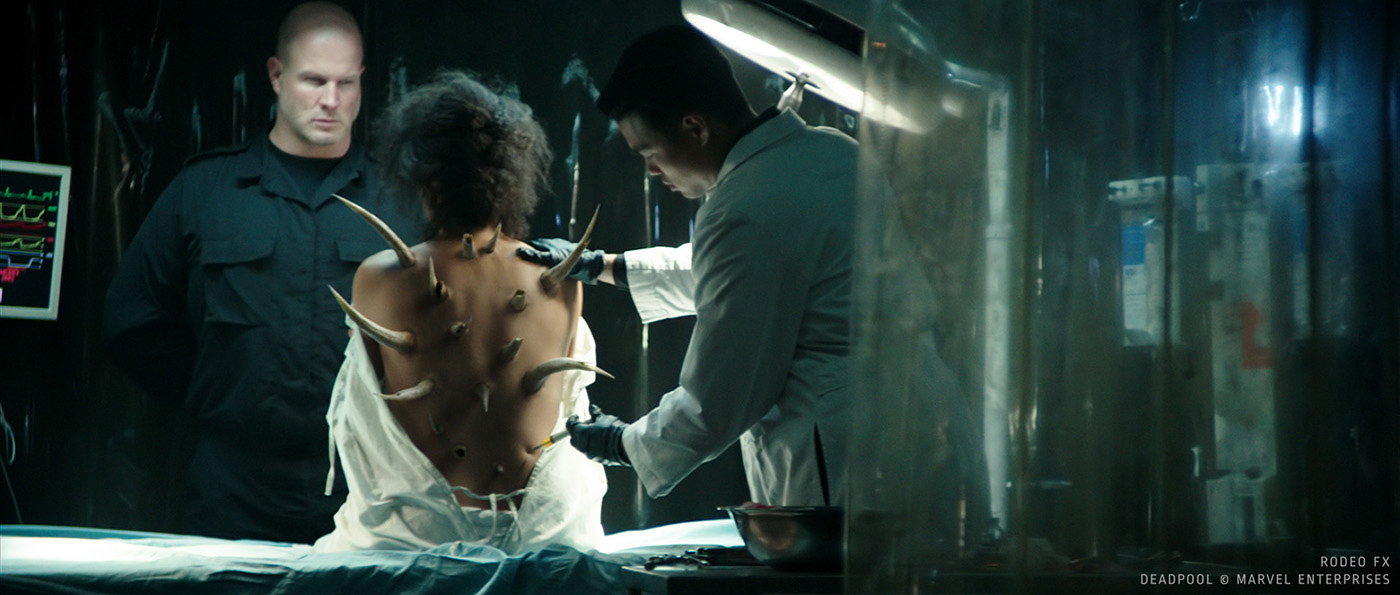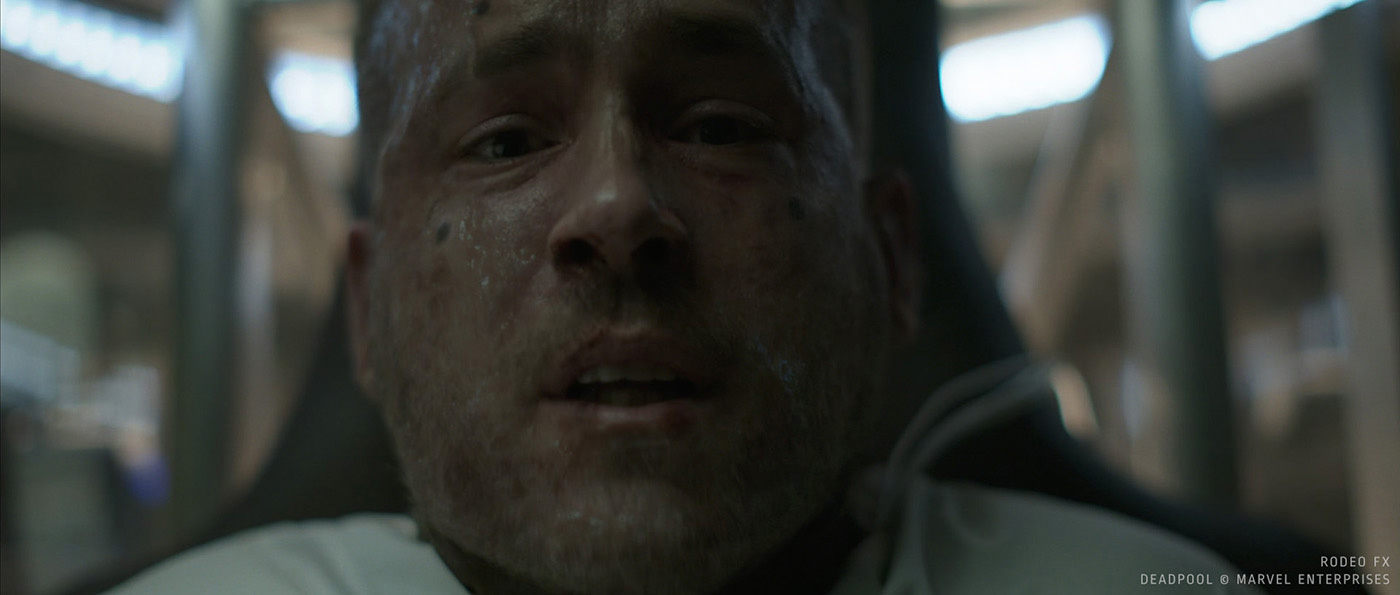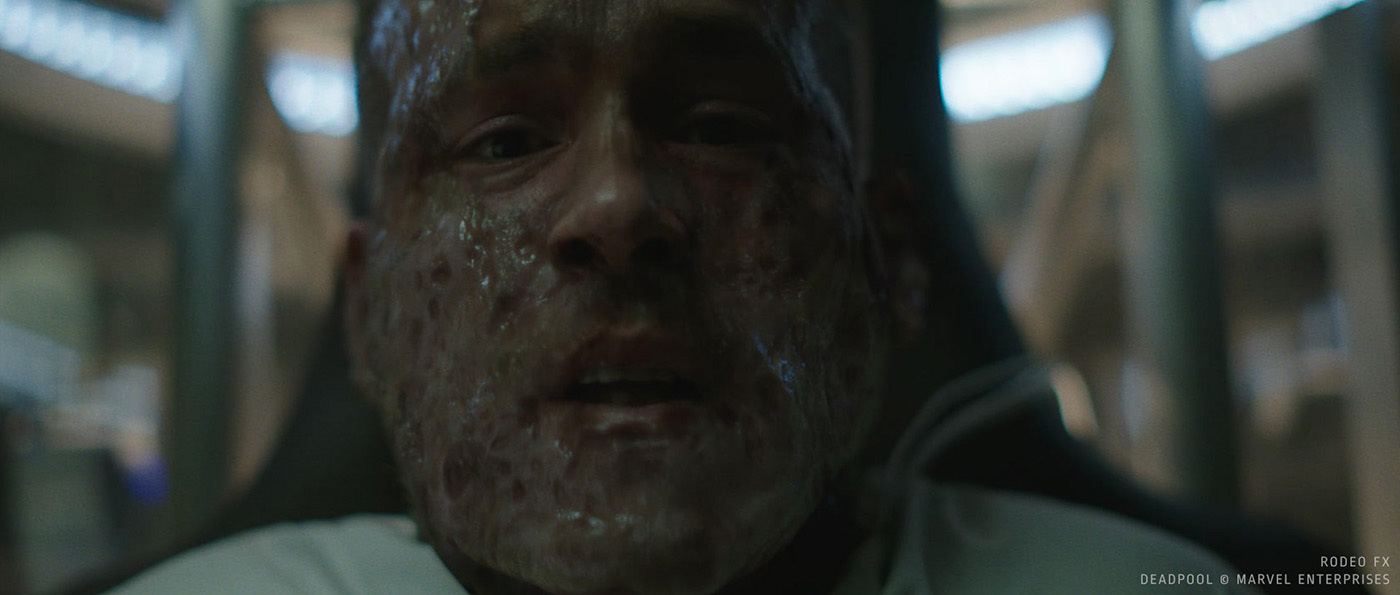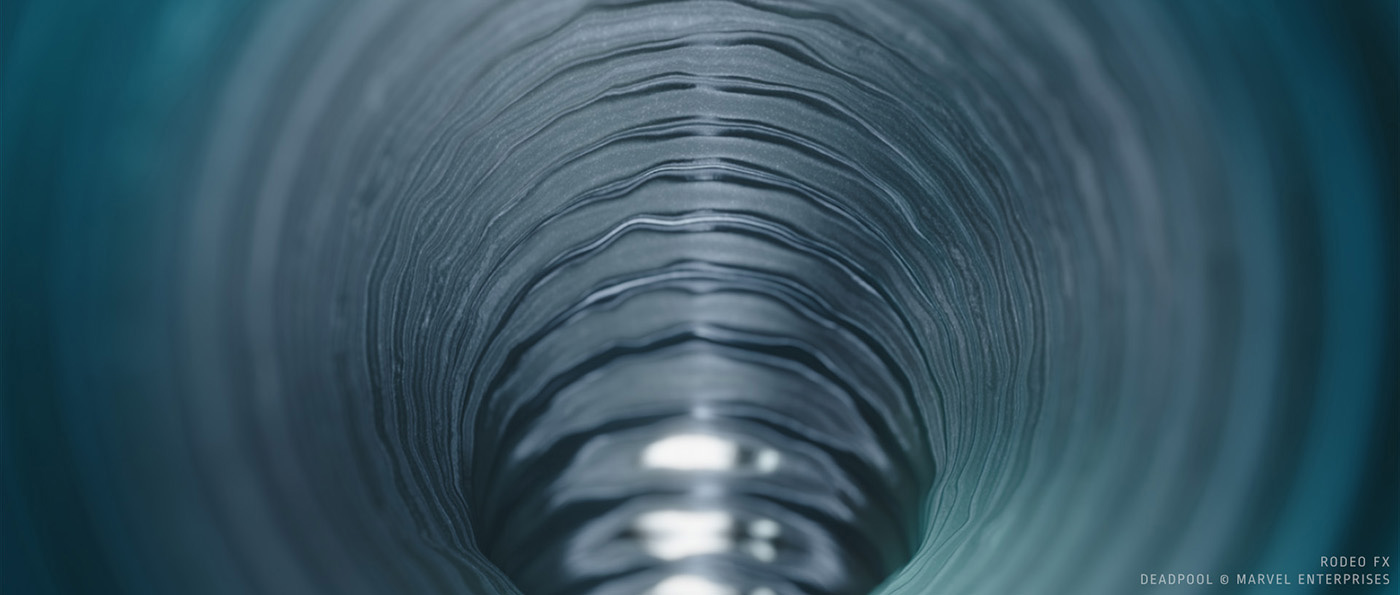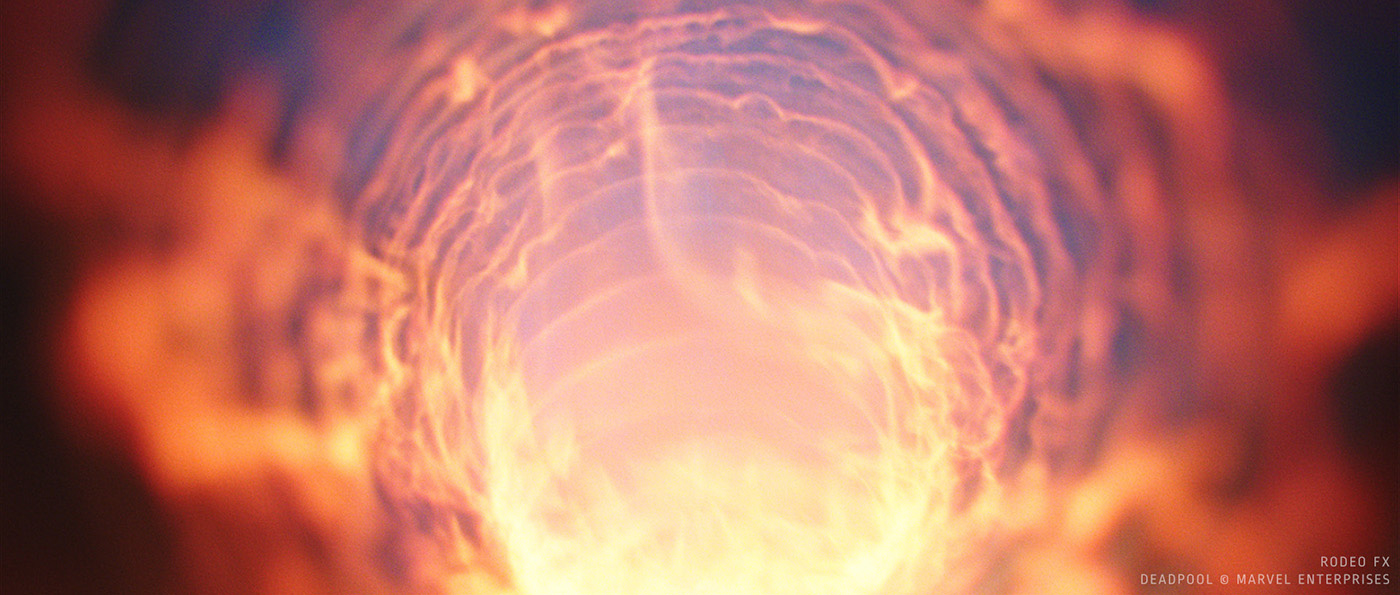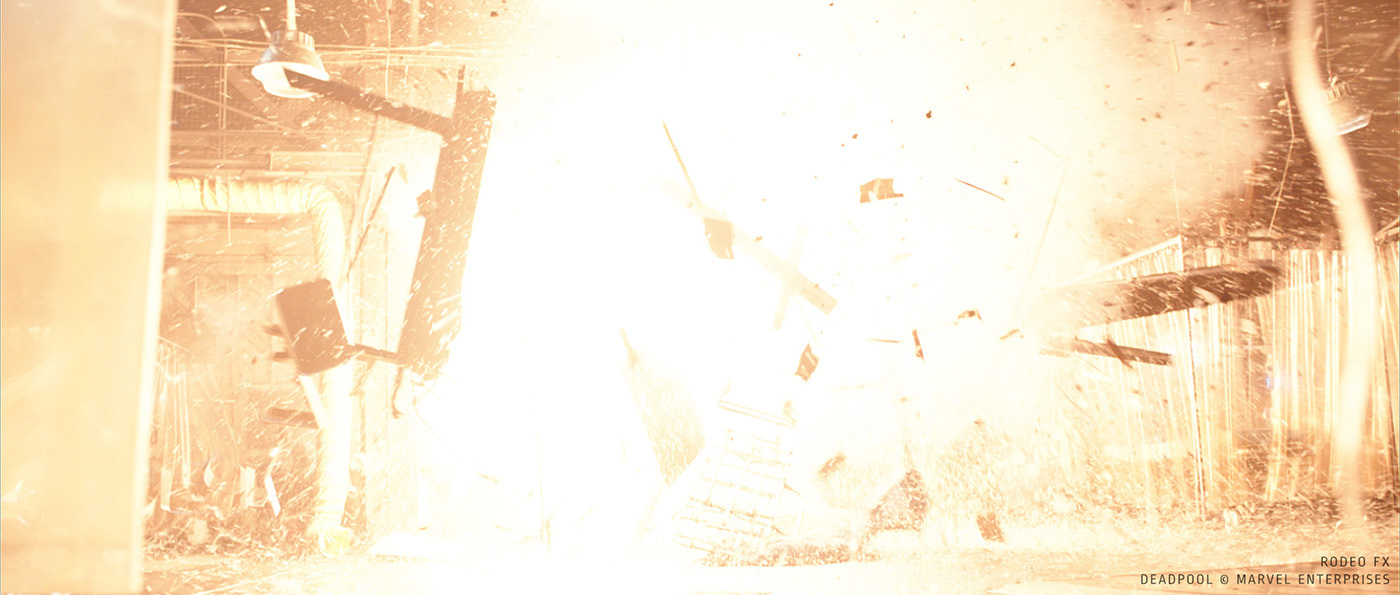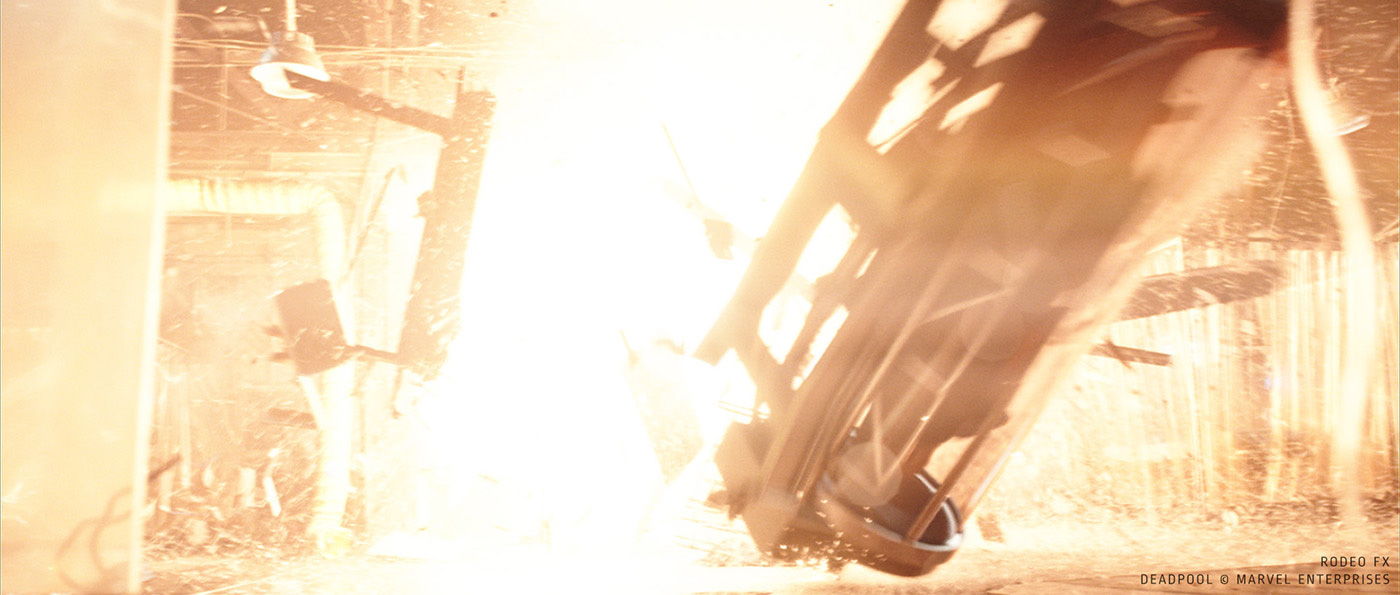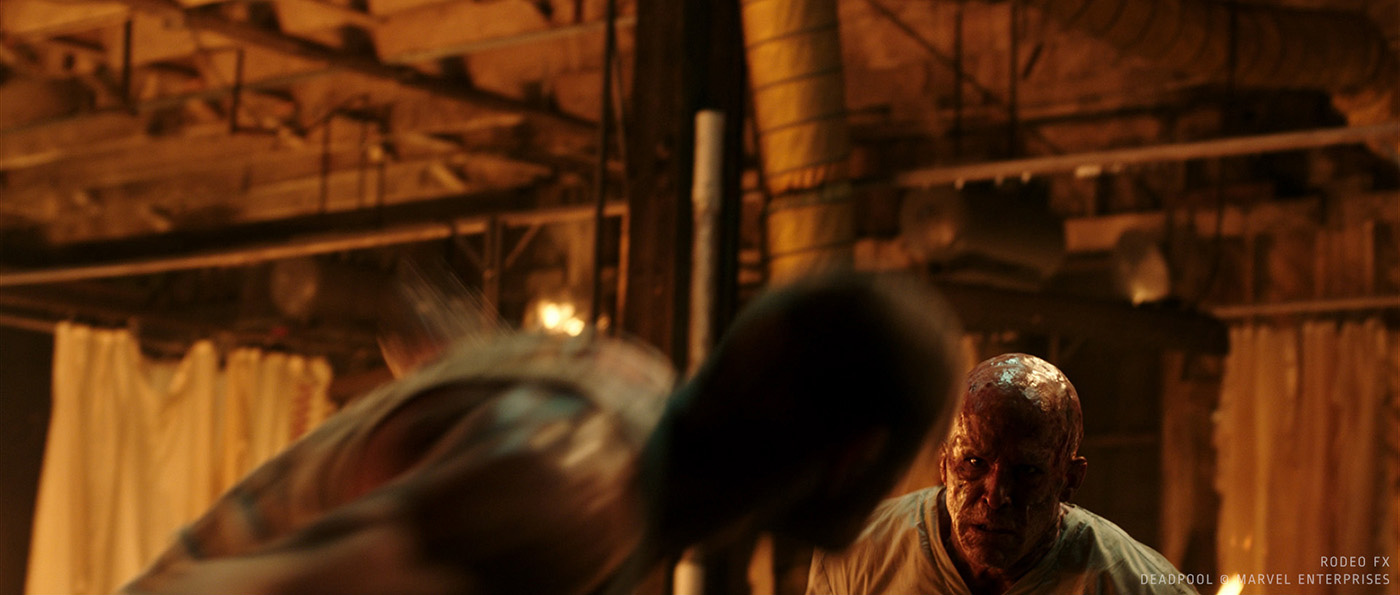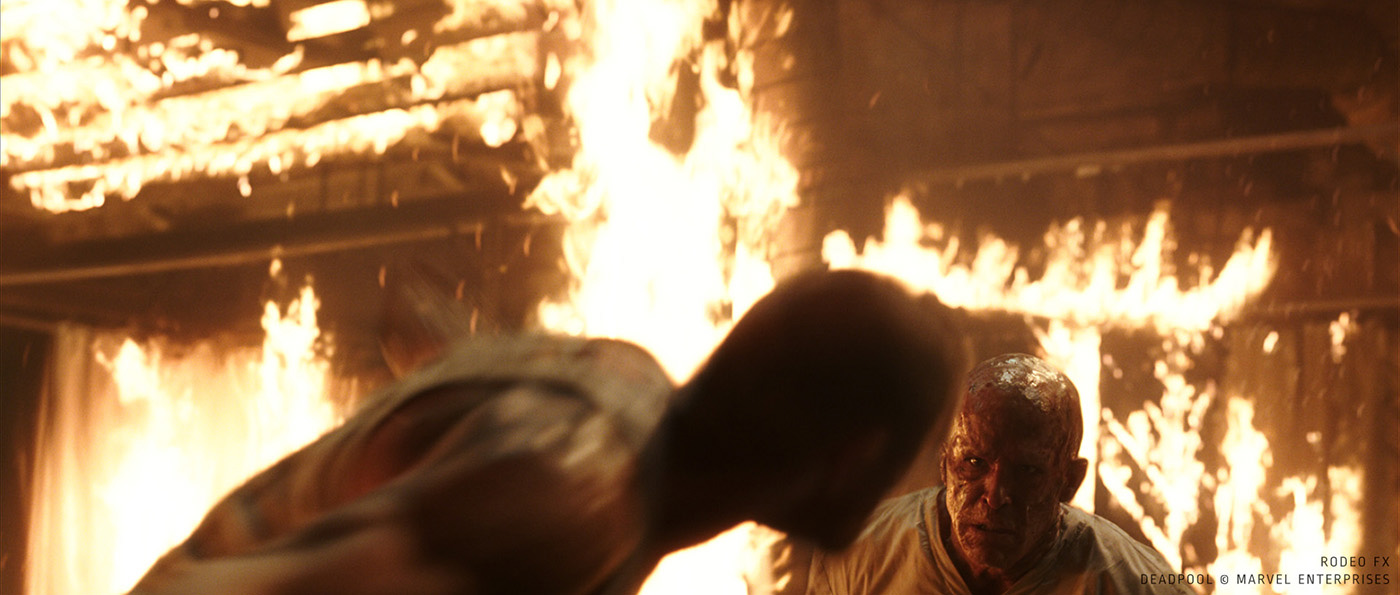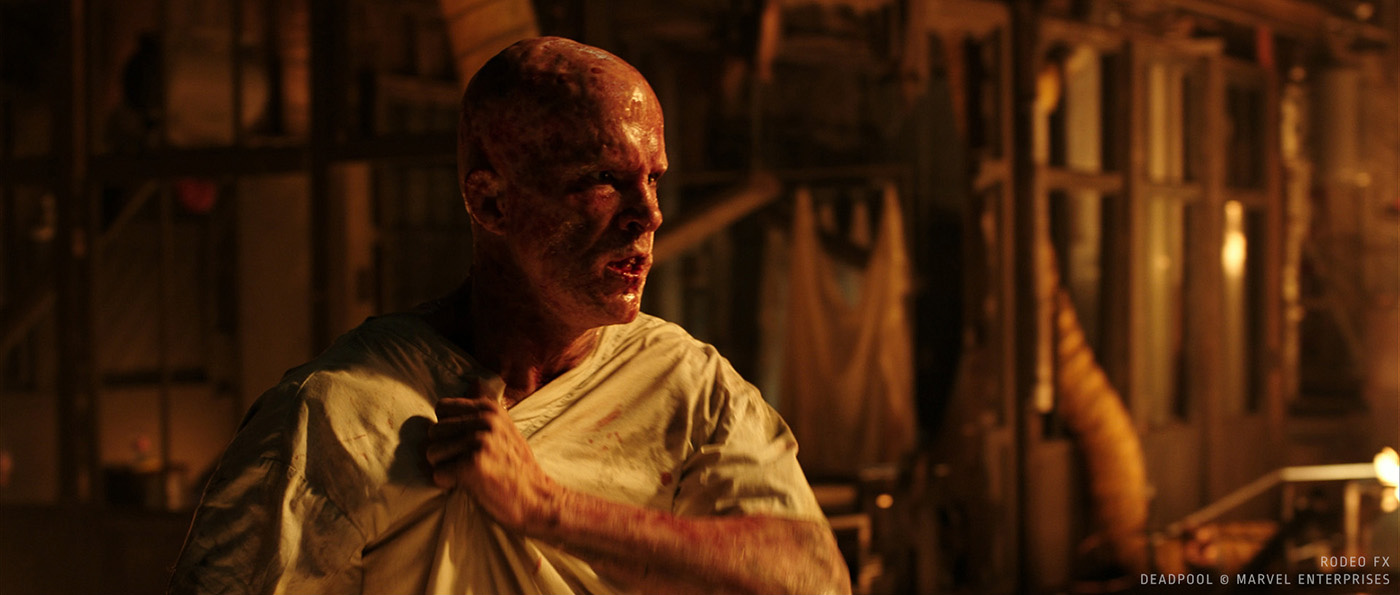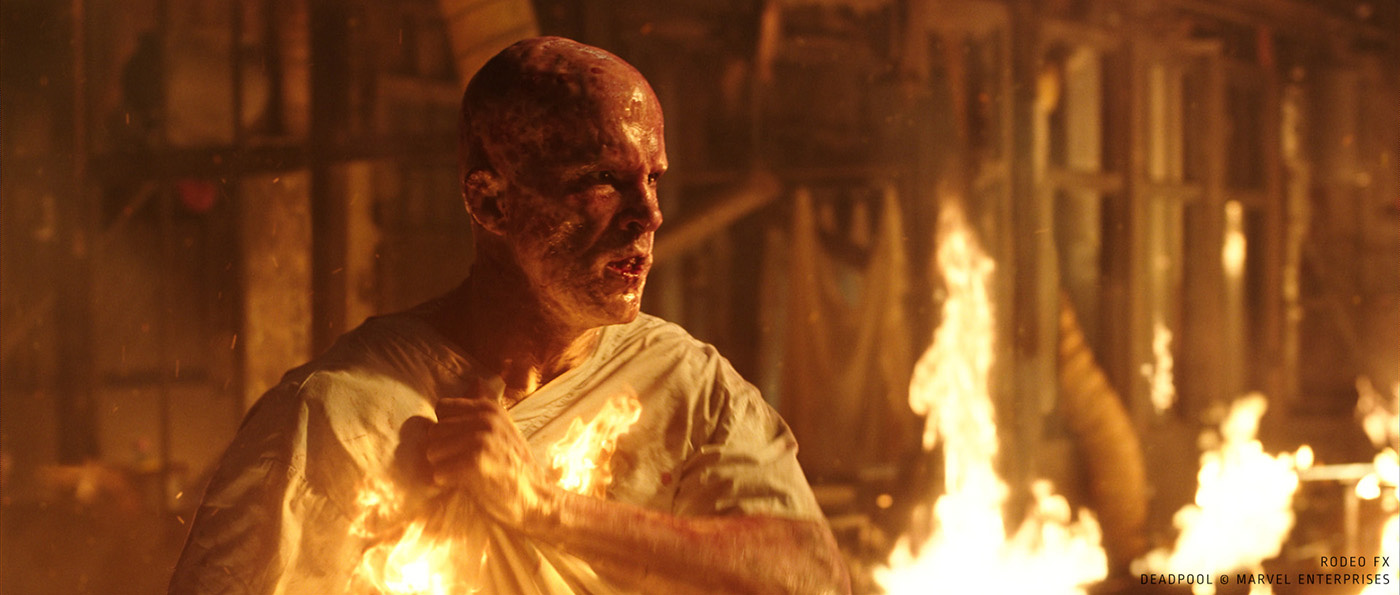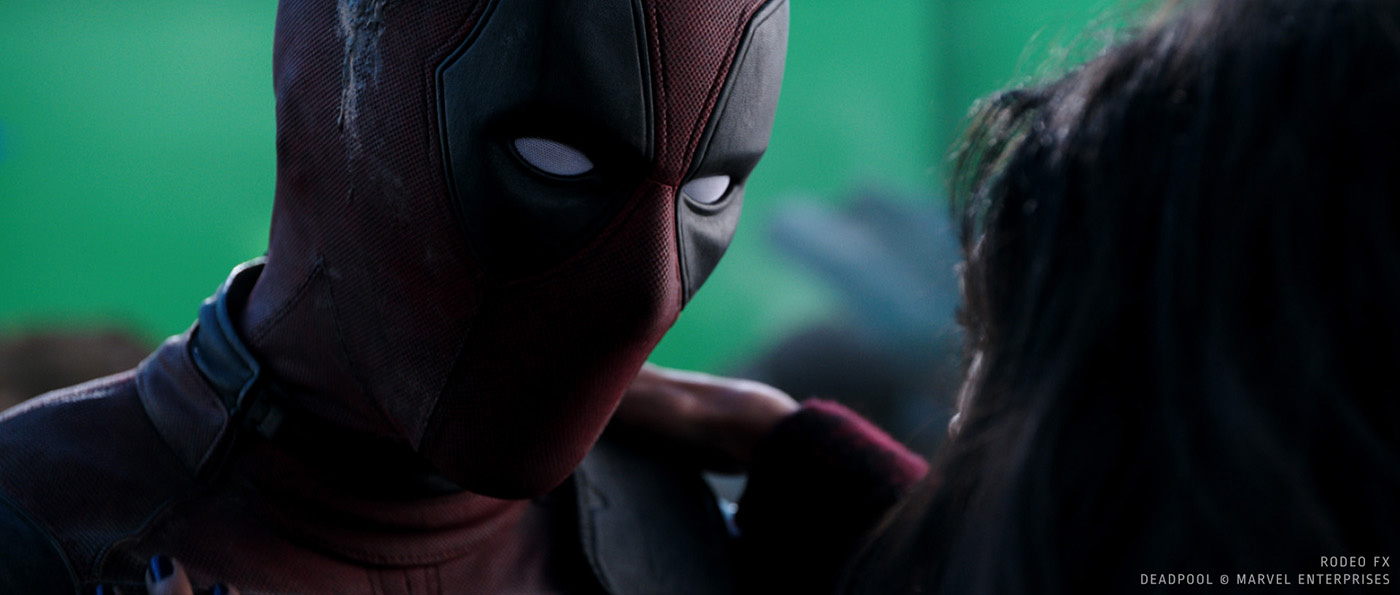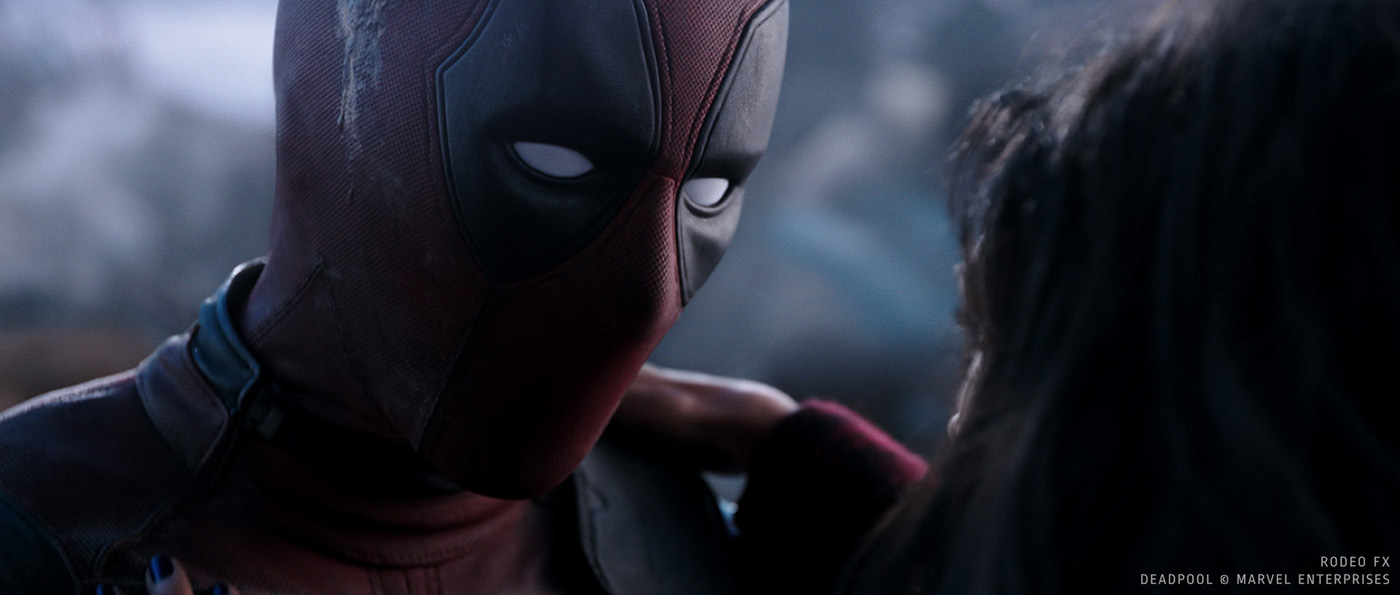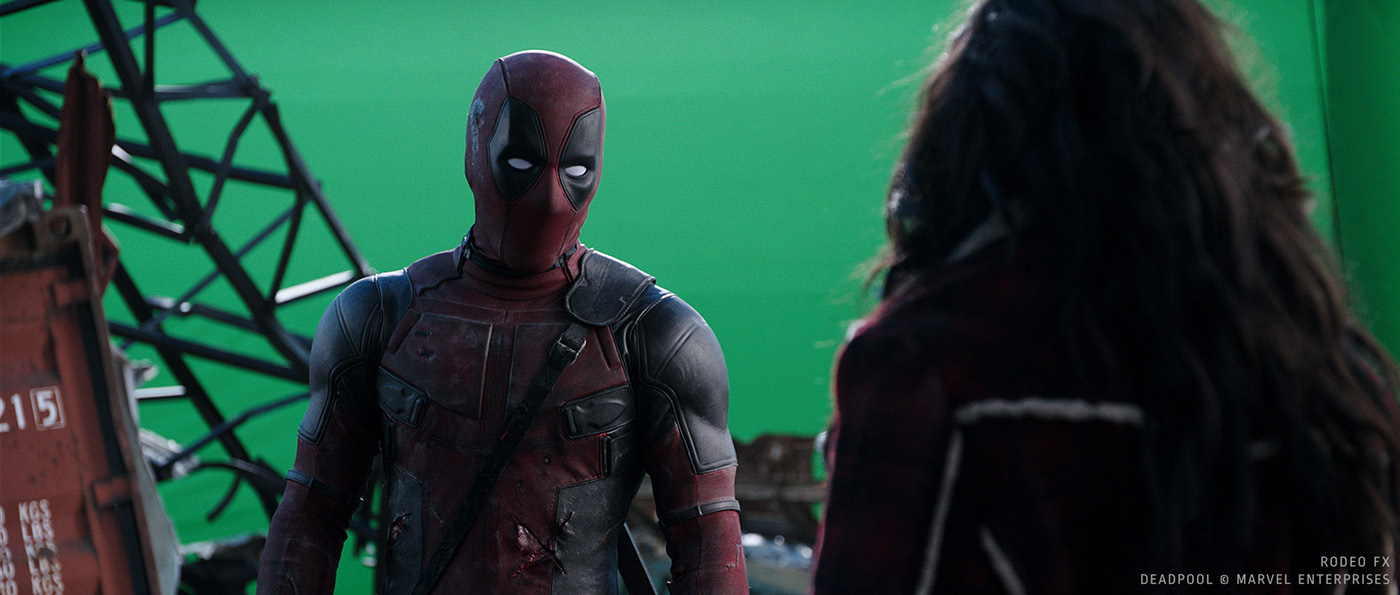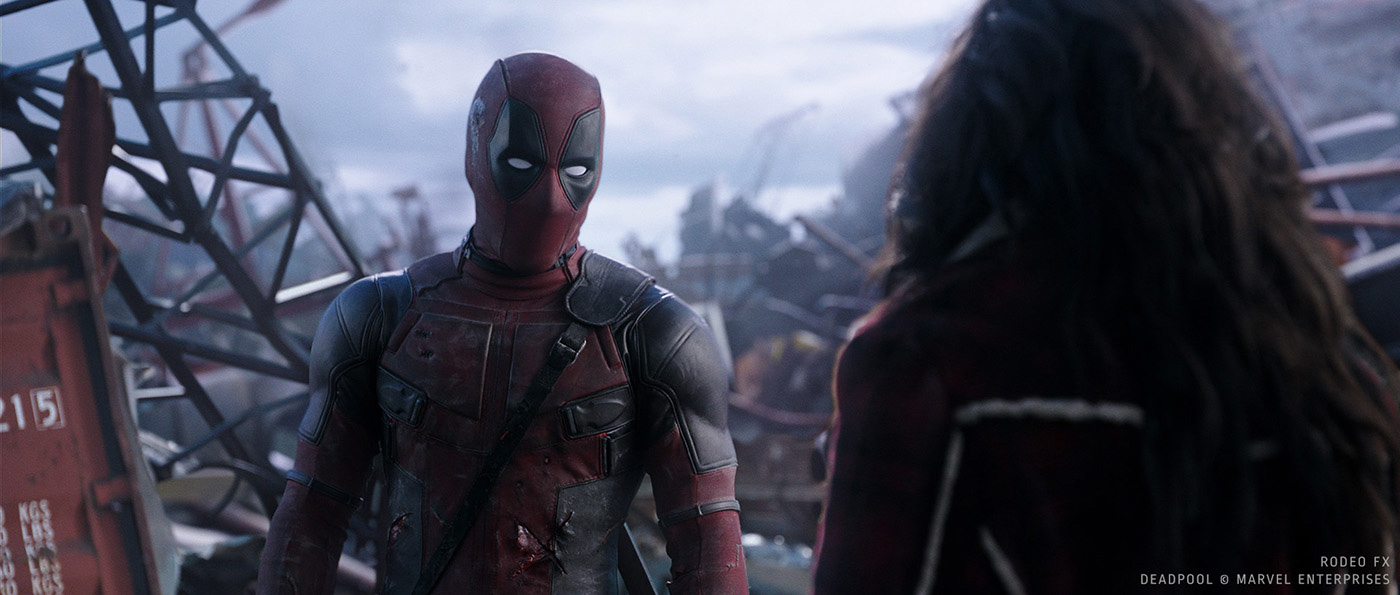In 2013, Wayne Brinton explained to us about the work of Modus FX on PARKER. he then worked on NOW YOU SEE ME and BEAUTY AND THE BEAST. Then he joined MPC to work on X-MEN: DAYS OF FUTURE PAST and CINDERELLA. In 2015, he joined Rodeo FX and worked on GAME OF THRONES and WARCRAFT.
How was the collaboration with director Tim Miller and VFX Supervisor Jonathan Rothbart?
Working with Jonathan was amazing. He gave me and my team so much trust that we never felt restrained in how we approached shots.
What was their approach about the visual effects?
Everything just needed to fit into the movie. There always needed to be a layer of realism in the vfx.
What are the sequences done by Rodeo FX?
We did the Warehouse fight scene that included the skin mutation and fire engulfing the building. We also did the end sequence plus some support on miscellaneous sequences.
Can you describe one of typical day during the post?
It was a very collaborative project. Every day we would focus on solving a problem with the resources we had. Every artist had the opportunity to put his or her own style into the work.
How did you approach the project?
Everything we did started with looking at the source material (the comics) and see if there were any similarities we can draw on.
Can you tell us more about your work inside the warehouse and especially the mutant with the pikes?
That was one of the one offs. We were asked to make some CG bones for the girl who is called Marrow. Again, we went to the comics to find references then provided concepts for Tim to approve.
How did you created the Deadpool transformations?
This was one of the most collaborative sequences we worked on… and the most fun. We started with concepts that Tim and Jonathan approved. But when we received the plates we realized they were too dark to see the subtleties we wanted to add. So we had to rethink our process. Very quickly, everybody from matchmove and modeling, to lighting and comp wanted to pitch in. Next thing we had geo of the skin mutation modeled in Zbrush from the concepts, and lighting passes all sent to comp. Then we used UV mapping to texture the geo and the light passes to further the look.
Deadpool use a match to get free. That cause a massive explosion. Can you explain in details about the flames we seen in close-up and the big explosion after that?
The big explosion was practical and looked amazing. We were asked after the fact to add a CG punchbowl (where Wade is held) so we had to emerge from the practical explosion in 2 shots. This meant light the asset with the onset fire environment then creating some FX sims that could be embedded into the explosion seamlessly.
There is a big fight between Deadpool and Ajax in the burning warehouse. How did you enhanced the fire?
They had some fire on set. So we had a practical reference to match to. Plus they provided us with a lidar scan. This allowed us to bring a model of the set into Nuke and place a camera, allowing us to know exactly in 3d space where we needed to add fire.
For the fire we used a combination of lots of fx sims and practical fire we shot ourselves. Having the scene to refer to meant that we were able to match camera angles and build wooden props exactly like what we can see.
Can you explain in details about your work on the shot revealing Deadpool rising from the ashes of the warehouse?
This was a straightforward matte painting. The only brief we got from Tim and Jonathan was that it is by the docks and we should see a post apocalyptic Detroit. We basically made it up again, using images from comics.
The movie ends in a massive rubble pile. How did you created this environment?
This was a team effort with Blur Studio. They had done assets for the wider shots and we took the pieces and made some matte paintings for key angles. Then we shared them along with our ash and smoke elements so that both vendors could create the same environment.
What was the main challenge for you and your team?
Our 2 main sequences could only be done in big blocks. We could never get just one shot final… they all had to be at the same level in order to have them approved. So it took a long time to get any Finals. But Jonathan understood this and had the patience to let us work the way we felt was best.
Was there a shot or a sequence that prevented you from sleep?
No. Never. The show was too much fun to worry about anything.
What do you keep from this experience?
That all projects should have groups of small teams working on them together. People coming together to solve smaller chunks of a bigger puzzle is the most effective…and a fun way to do a show.
I know that you are a big fan of Deadpool. What was your feeling to bring him back to big screens?
Best adaptation of a comic book character ever.
How long have you worked on this show?
7 months.
How many shots have you done?
We were awarded 90 shots and ended up delivering nearly 230 shots.
What was the size of your team?
It ranged from 40-90 people, depending on the production step.
What is your next project?
Unfortunately, I can’t reveal this information right now, but it is definitely a movie that will take me to a completely different universe! This project will be miles away from Deadpool and comic books!
A big thanks for your time.
// WANT TO KNOW MORE?
– Rodeo FX: Dedicated page about DEADPOOL on Rodeo FX website.
© Vincent Frei – The Art of VFX – 2016


